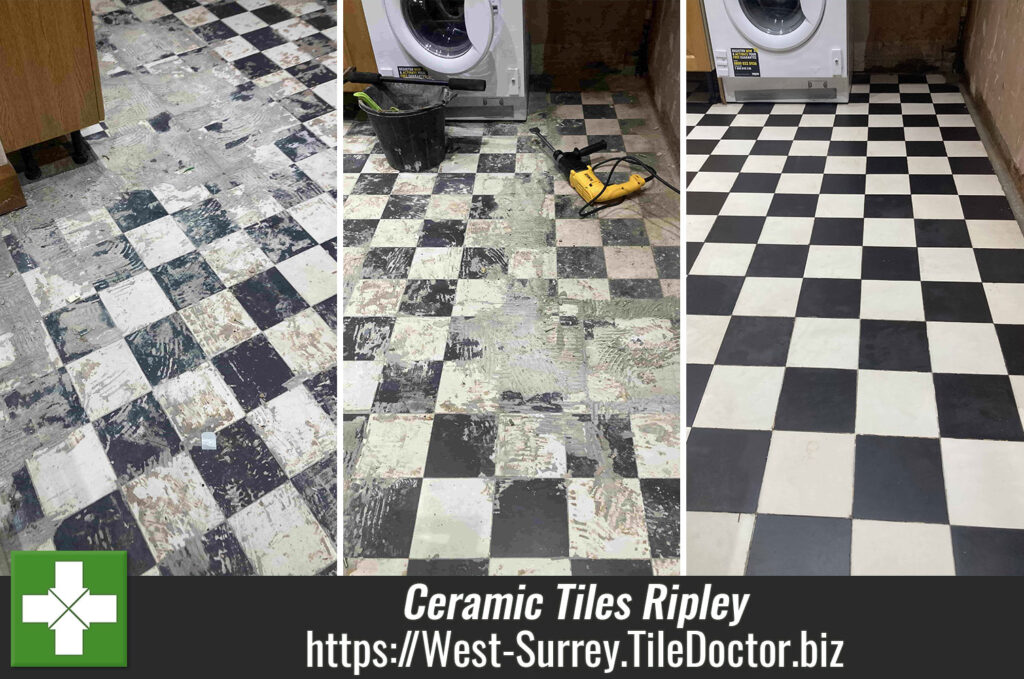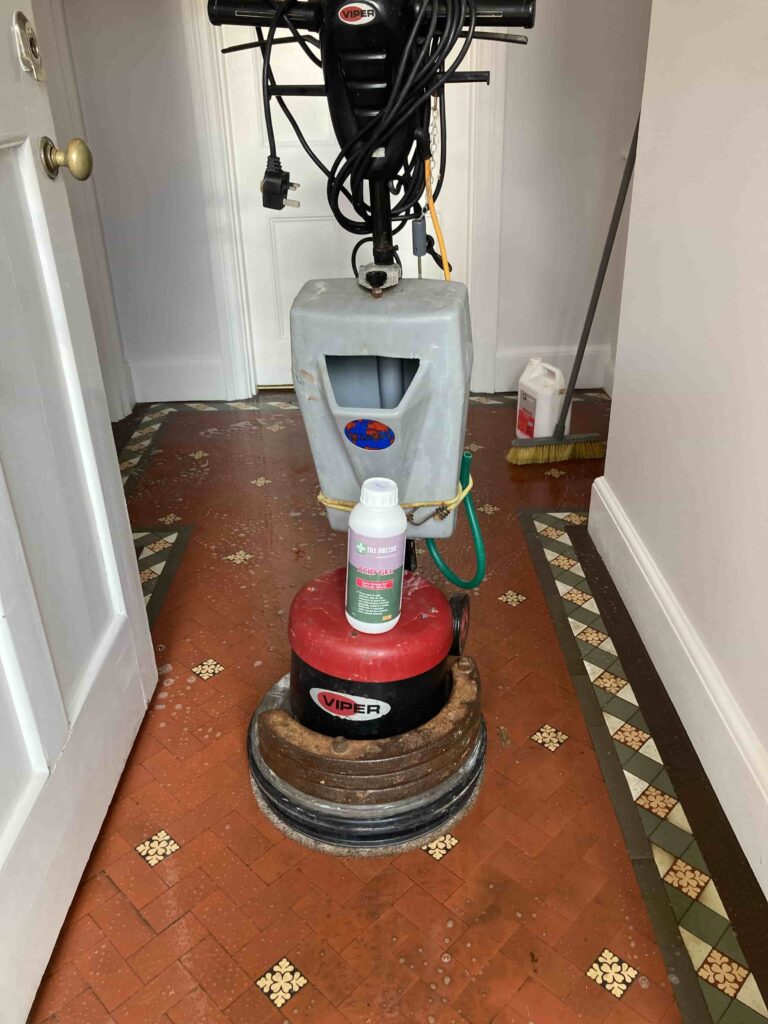Renovating a Classic Ceramic Tiled Kitchen Stained with Adhesive in Ripley
This 1940’s Black and White Ceramic tiled floor at a property in the Surrey village of Ripley was covered in adhesive and the owner needed our help in cleaning them up. Originally, they had been covered in hideous blue tiles which the customer decided to remove to see what was underneath.

They started pulling them up only to uncover a classic chessboard pattern ceramic tiled floor underneath. The blue tiles came up quite easily however the tile adhesive that was left underneath had heavily stained them and proved much too difficult to remove. Overwhelmed with the size of the task now faced and unsure how to renovate the ceramic tiles a decision was made to ask for professional help. They contacted Tile Doctor to get a quote.
I popped over to the house to have a look at the job and estimated it would only take around a day to complete the work, which would be a bit of a manual task to remove the remnants of the adhesive. They were happy to accept my quote and pleased that I was confident the floor could be restored.
Removing Adhesive from a Ceramic Tiled Kitchen Floor
Donning safety glasses and ear defenders my approach was to carefully remove the bulk of the adhesive with a power chisel. It took several hours to remove most of it and the rest I scraped off with sharp blades leaving some residue and dirt.

To deal with the remaining adhesive I covered the tiles with a strong dilution of Tile Doctor Remove and Go and left it to soak in. I then brought in a weighted buffer fitted with a coarse diamond pad and ran it over the tiles. This removed all the remaining adhesive and lifted out the dirt.
The resultant slurry was then rinsed off and extracted with a wet vacuum. The floor was then thoroughly rinsed with warm water then dried. Before finishing I cleaned up around the edges with a handheld diamond block.
Generally ceramic tiles don’t need sealing as they are sealed within the factory process. So, once all the adhesive was gone, the job was finished.

The floor was transformed by the work, and my customer was very happy with the finish. They were pleased to see the nasty blue tiles gone and very happy to see the classic original floor restored.
Little maintenance is required for a floor like this, normal regular mopping will suffice. They can use Tile Doctor Neutral Tile Cleaner for this, it has a minty fresh fragrance and is mild enough to be used daily, keeping the floor in great condition.

Professional Restoration of a Ceramic Tiled Kitchen Floor in Surrey
Renovating a Classic Ceramic Tiled Kitchen Stained with Adhesive in Ripley Read More »





















